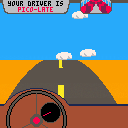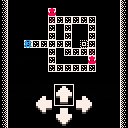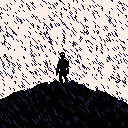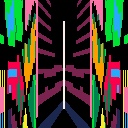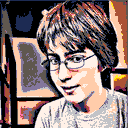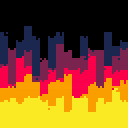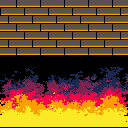Candy Bomber
Original version released December 25, 2020
Based on Operation Little Vittles, this is "Candy Bomber." Fly your plane, avoid Soviet planes buzzing by, and most importantly, drop as much candy as you can onto the occasional pink airfields.
This game is dedicated to Colonel Gail Seymour Halvorsen of the United States Air Force, as well as all those who served in the Berlin Airlift. Halvorsen founded Operation Little Vittles, raising morale in the city of Berlin by airdropping candy to the residents below. His actions were initially unauthorized, but he soon became a national hero.
I initially wrote the basis of this game two years ago, but it sat unfinished until I decided to fix it up and release it this year. The code is barely held together. I regret not finishing this two years ago, or last year -- and I barely did this year due to a bad bout of depression -- but I felt obligated to finish it while Halvorsen, who is at the time of writing 100 years old and sadly in the hospital with COVID-19, was still around. Special thanks to kittenm4ster for their
So, this came out of an experiment to see how I could replicate the line scrolling effects in some of those classic 2d racing games. Somehow I got the idea to make it into a demake of Desert Bus, the mind-numbing driving simulator from the unreleased Penn & Teller's Smoke and Mirrors for Sega CD. I sat on this for maybe a year because the code, especially the road-drawing, is pretty sloppy and I prefer my carts to be organized and well-documented... but, eh, what the heck.


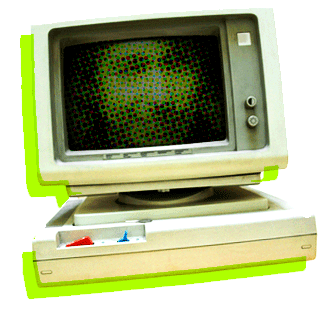

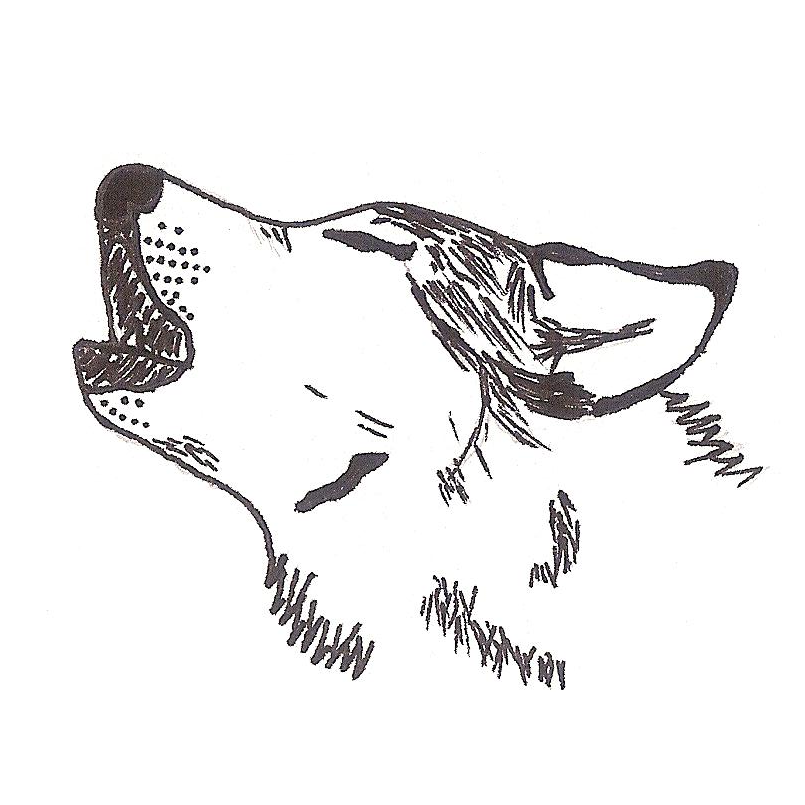
Lock Step is a puzzle game where you use one button to choose the direction in which you move. The twist -- enemies move every time you select a direction! Can you, the intrepid explorer, find your way to the hidden chest of gold at the end?
This game was made for the 2019 Game Maker's Tool Kit game jam, the theme being "only one." It took roughly 5-7 hours to finish. There's 7 puzzle stages, so it shouldn't take too long to beat! Oh, and check it out at itch.io here, where I've submitted it for the game jam.

This is a project I made for a class at college. It follows the trajectory of Victor Frankenstein through scenes from the novel "Frankenstein," analyzing how his 'family triangle' of relationships (that is, father, mother, and son, or the lack of these) changes over time. Each scene compares the location in the present day to their depiction in the novel (denoted as "1818").
The code is rushed, highly redundant, and resembles delicious spaghetti; please don't look at it.
I began editing my Starfield cart to remove the parts that aren't necessary and fix a couple things. So here's a few cartridges that you can modify and drop into your own programs, as well as a tweet length (exactly 280 characters!) starfield cart.
Edit: moved this to code snippets where it belongs.
Starfield Snippet: this cart is medium size, including more rendering code so you can do things like modify the position of the camera and including the function that allows the user to change the speed of the stars. Also fixes a color bug in the original and adds a new dark blue transition color as suggested by @Liquidream.
A starfield effect, inspired by the old Windows screensaver, though the style is more in line with Star Trek. Use up and down to increase and decrease speed, and press X to show stats.
I used nucleartide's Pico-8 snippets, specifically vec3 and pline(), to do the 3D projection. I was encouraged by reinvdwoerd's Perspective Lines and used his cartridge to figure out how to use pline().
To really get immersed, shout "increase speed to [warp number]!" as you hold the up key or "all stop!" as you slow down to zero.

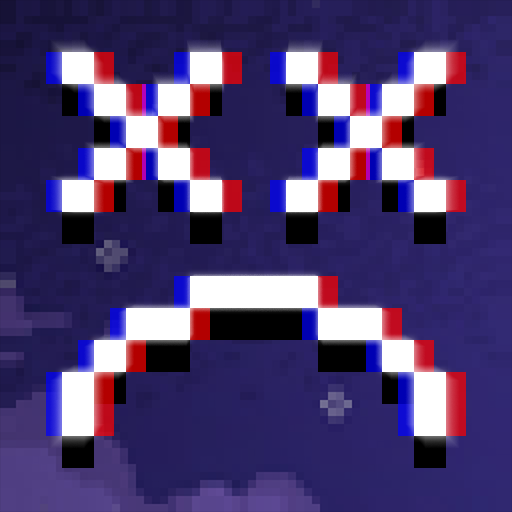
I was messing around with my earlier fire demo and found this weird result. Use left and right to adjust the width of the bars, up and down to adjust how fast the bars change colors, X to change the colors randomly, and Z to reset. The rendering is interlaced, which leads to interesting results when you hold down X -- epilepsy warning!
I don't see this being particularly useful, but maybe it could work as a music visualizer.

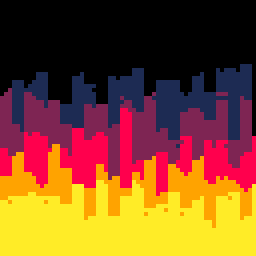
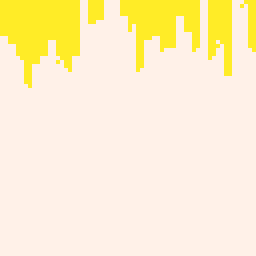

A real-time fire effect based on the PSX Doom fire described by the wonderful Fabien Sanglard. Uses interlaced rendering to speed things up dramatically. Use the arrow keys to add wind, Z to show/hide stats, and X to turn the fire on and off.
A similar Pico-8 fire was done by Ben Hickling. However, that one looks and works a little differently, and runs at a lower 32x32 resolution (though with higher performance).
I think there's probably ways to make this a fair bit faster, but I just wanted to share this with you all. I hope it keeps you warm, and Happy New Year!






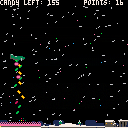
 0 comments
0 comments
